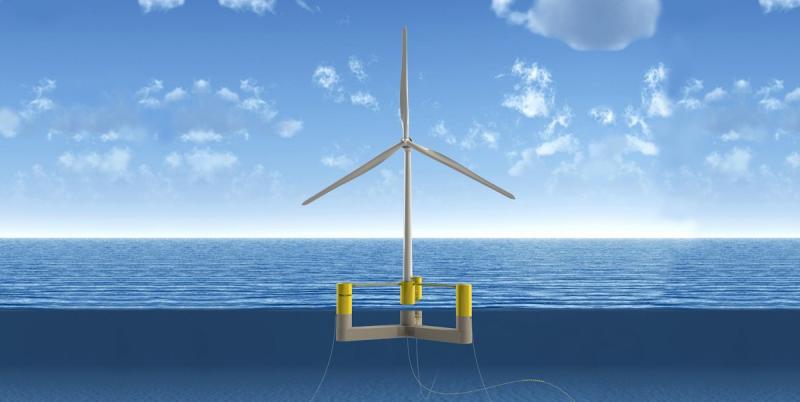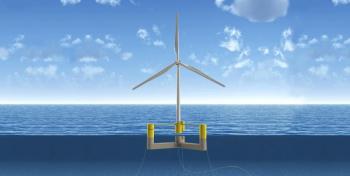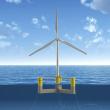Mills signs 10-year moratorium on offshore wind, NEAV exempted
Gov. Janet Mills signed LD 1619 July 7 placing a 10-year moratorium on offshore wind projects in state waters. In a same-day press release, Mills and the Governor’s Energy Office (GEO) praised the bipartisan legislation for seeking state water preservation while encouraging offshore wind research in the Gulf of Maine’s federal waters.
The New England Aqua Ventus research project will be exempted from the moratorium. The public-private project headed by University of Maine in Orono, RWE Renewables and Mitsubishi’s Diamond Offshore Wind will consist of a 10-12 megawatt turbine moored two miles south of Monhegan Island with a transmission line landing in East Boothbay. In 2019, Maine Public Utilities Commission approved a 20-year power-purchase agreement at above-market rates between NEAV and Central Maine Power. Other exemptions include future amendments to the project, transmission lines and other infrastructure.
“The bipartisan votes to enact offshore wind legislation this year are a key step forward for Maine to seriously address the climate change threat while creating jobs for Mainers,” said NEAV Spokesman David Wilby in an email. “The establishment of important new policies means Maine will continue down a deliberate and collaborative path toward deploying offshore wind, luring jobs in a new industry to Maine.”
LD 1619’s passage follows LD 336, signed by Mills June 22, which kicks off the U.S.’s first floating offshore wind research area in federal waters, on the Gulf of Maine’s outer continental shelf. The bill requires the PUC to facilitate public and/or private contracts researching floating offshore wind technology, the first being a 12-turbine array 20-40 miles offshore. The Mills administration proposes using the UMaine/NEAV technology and the PUC will seek a contract bringing in up to 144 megawatts from the array. Representatives from the fishing industry, environmental experts and offshore wind experts will oversee the research.
The PUC will reveal its preferred site before formally applying to the federal Bureau of Ocean Energy Management (BOEM), said the release; potential sites target Maine Yankee in Wiscasset or Wyman Station in Yarmouth to accept a transmission line from the array. The GEO will hold a virtual meeting July 14 to begin developing an Offshore Wind Roadmap, which is supported by $2.16 million in U.S. Economic Development Agency grants and will conclude in 2022.
Said Wilby, “Legislators have made critical decisions about how to proceed in a new high-tech industry, committing to research in the Gulf of Maine and engaging fishermen and other maritime users. This course, charted by large bipartisan legislative majorities, means Maine will be proactive in protecting the state's interests and values in federal waters while rapidly developing and building UMaine's patented floating turbine technology in Maine, by Mainers.”
Maine Coast Fishermen’s Association Executive Director Ben Martens said in an email, the legislature should be commended for ensuring fishermen and communities were respected and heard throughout public discussion on offshore wind development. However, Martens also said there is much more to learn. “We are still early in the process of understanding the impacts of offshore development on the ecosystem, fishing communities, and all Mainers who will be subsidizing these projects through electric purchase agreements, but we look forward to working with our elected officials to protect Maine's seafood economy and an iconic way of life along the coast.”
Event Date
Address
United States
























